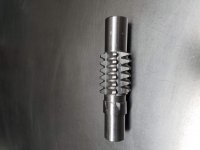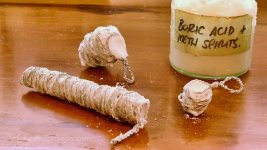ksierens
Plastic
- Joined
- Dec 3, 2012
- Location
- Clinton Township, MI
I am looking at some specs for hardening W-1 drill rod, and have some general questions about setting up the cycles on a furnace to preheat it.
The specs state:
HARDENING
Preheating: Heat to 1200° F, hold at this temperature until thoroughly soaked.
Hardening: Heat to 1425 to 1475° F. Soak at heat for 30 minutes per inch of thickness. Temperatures on the high side of the range will increase the depth of the case.
Quenching: This material may be water quenched, but brine quenching is preferred. Water or brine quench to 150 to 200° F. Oil quenching is sometimes used for light sections and where maximum hardness is not required.
Tempering: Normally water hardening steels need be single tempered only. However, double tempering may sometimes be preferred. Soak at heat for two hours per inch of thickness for each temper. Air cool to room temperature between tempers.
Some other sites recommend preheating slowly, so my questions are what period of time is considered "slowly", and how long is considered fully soaked? Does slowly mean taking it to lower temperatures and soaking before raising the temperature?
The specs state:
HARDENING
Preheating: Heat to 1200° F, hold at this temperature until thoroughly soaked.
Hardening: Heat to 1425 to 1475° F. Soak at heat for 30 minutes per inch of thickness. Temperatures on the high side of the range will increase the depth of the case.
Quenching: This material may be water quenched, but brine quenching is preferred. Water or brine quench to 150 to 200° F. Oil quenching is sometimes used for light sections and where maximum hardness is not required.
Tempering: Normally water hardening steels need be single tempered only. However, double tempering may sometimes be preferred. Soak at heat for two hours per inch of thickness for each temper. Air cool to room temperature between tempers.
Some other sites recommend preheating slowly, so my questions are what period of time is considered "slowly", and how long is considered fully soaked? Does slowly mean taking it to lower temperatures and soaking before raising the temperature?



